
Canopy of the Ancient Ones
Majestic, centuries-old juniper trees with deeply gnarled bark and sprawling twisted limbs stand as spiritual symbols in a tranquil Japanese forest that is part of Ose-jinja Shrine grounds. Surrounded by lush greenery, these revered trees embody natural beauty, cultural heritage, and the serene mystique of rural Japan.
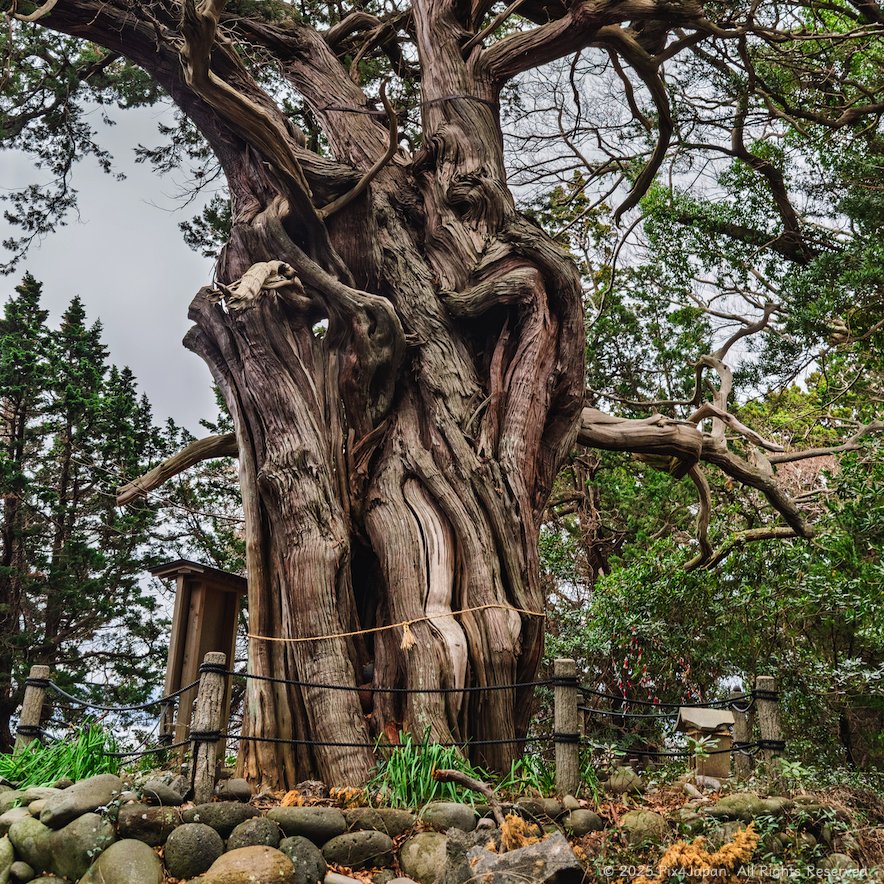
Sacred Junipers
A majestic, centuries-old juniper tree with deeply gnarled bark and sprawling twisted limbs stands as a spiritual symbol in a tranquil Japanese forest. Surrounded by lush greenery and marked with a sacred rope (shimenawa), this revered tree embodies natural beauty, cultural heritage, and the serene mystique of rural Japan.
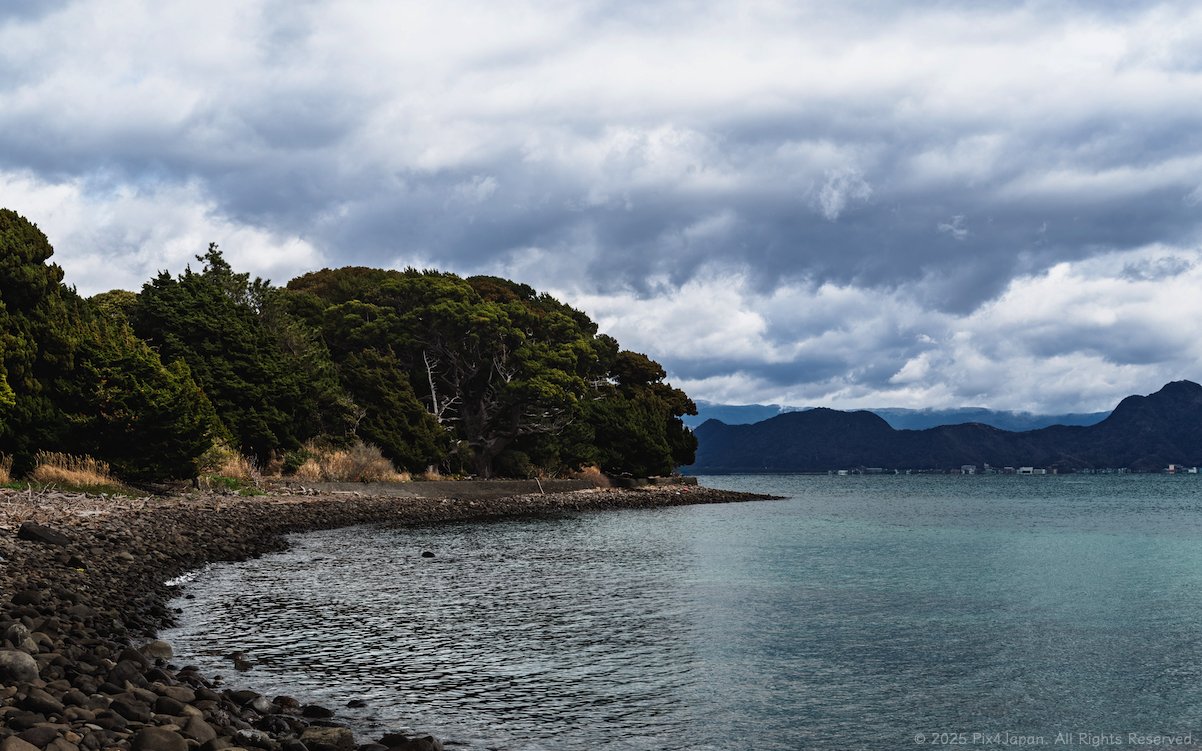
Cape Ose
A serene view of Cape Osezaki’s rocky shoreline, where deep green coastal forests meet the calm, turquoise waters of Suruga Bay. The overcast sky and distant hills add dramatic contrast, highlighting the natural beauty and quiet isolation of this rural Japanese peninsula in Shizuoka Prefecture.

Ose Shrine
Intricate wood carvings of mythological creatures adorn the columns and beams of a Shinto shrine with a long bamboo pole and thick straw rope stretched between the two columns at the front of the shrine located in a remote Japanese fishing village.
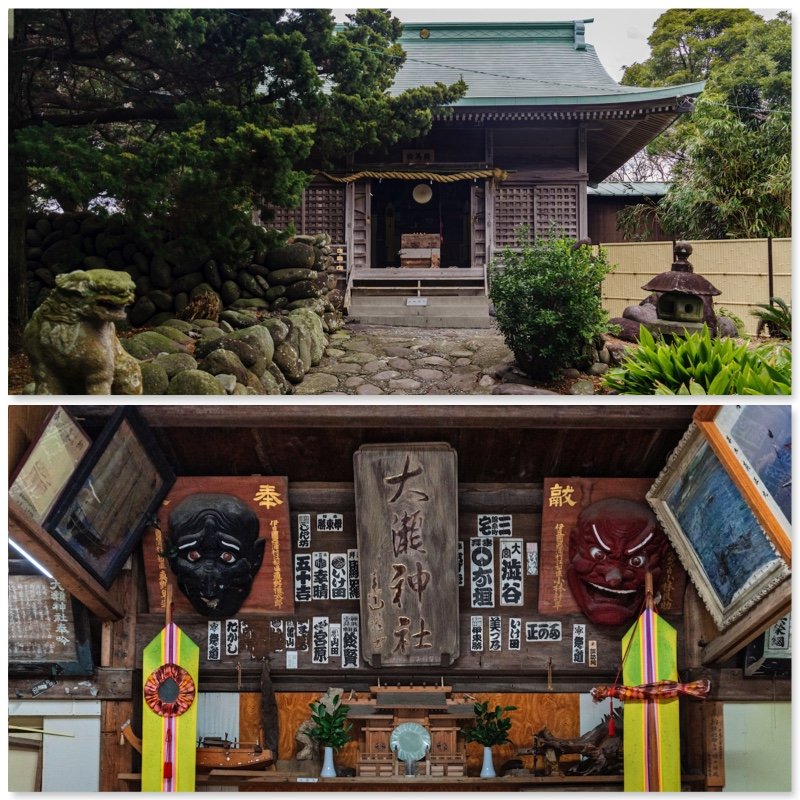
Emaden Hall
Emaden Hall at Ose Shrine on Cape Ose houses offerings, photos, and paintings from local fishermen to the shrine’s deity. The forested cape overlooks a sheltered cove along Suruga Bay, about 171 km (106 mi) southwest of Tokyo.
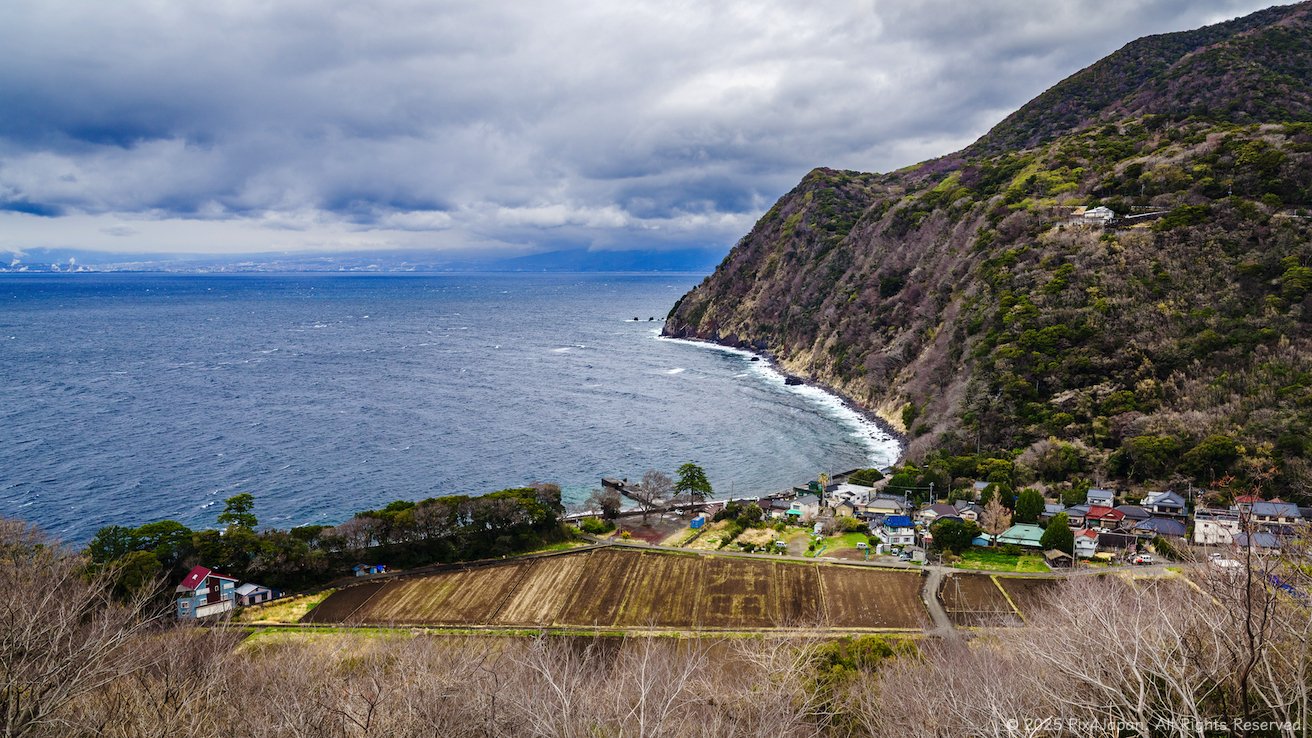
Ita Village
High-angle view of Ita Village name revealed in a fallow rapeseed field in a Japanese farming village on the Izu Peninsula, known for guesthouses, farmland, coastal scenery, and grand views of Mt. Fuji and Suruga Bay on clear days.
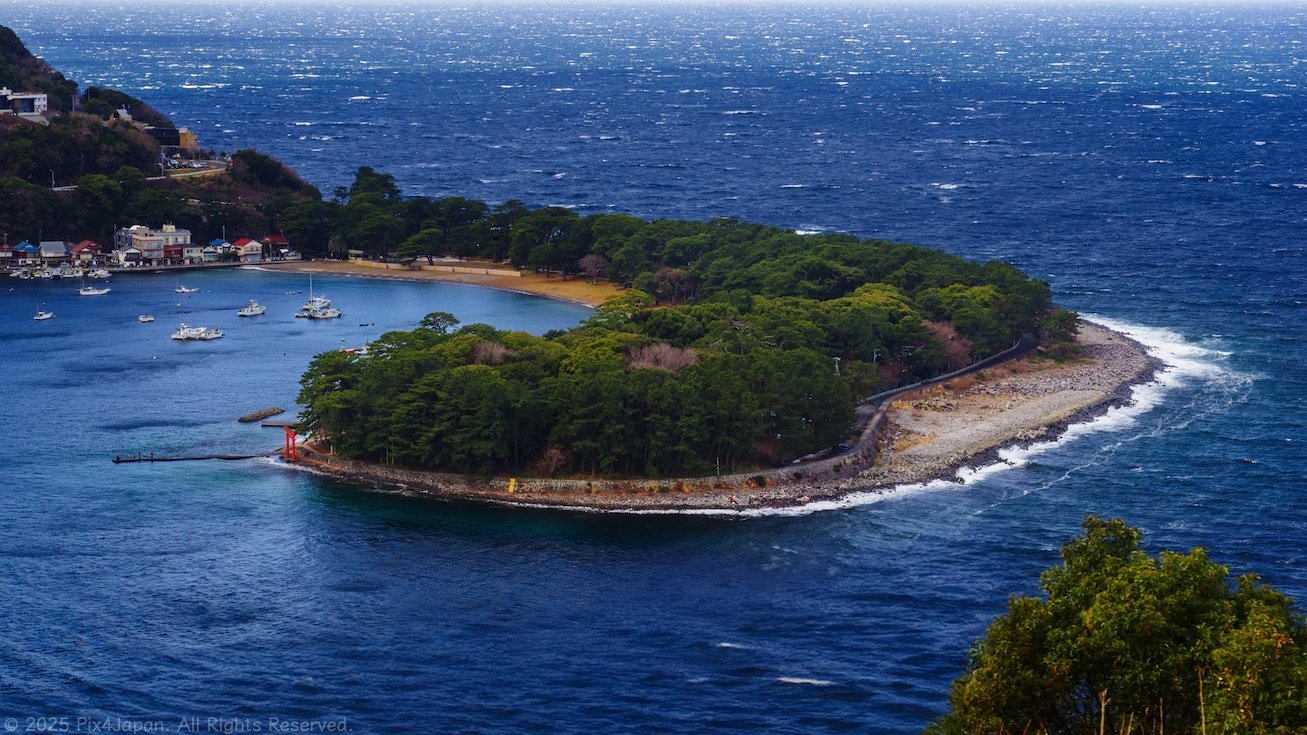
Cape Mihama
Cape Mihama on Japan’s Izu Peninsula, seen from a nearby cape, features a vermilion torii gate, forested cove, Shinto shrine, and traditional fishing village along Suruga Bay’s rugged coastline. Ocean currents have shaped this scenic port with rocks and sand over millennia.
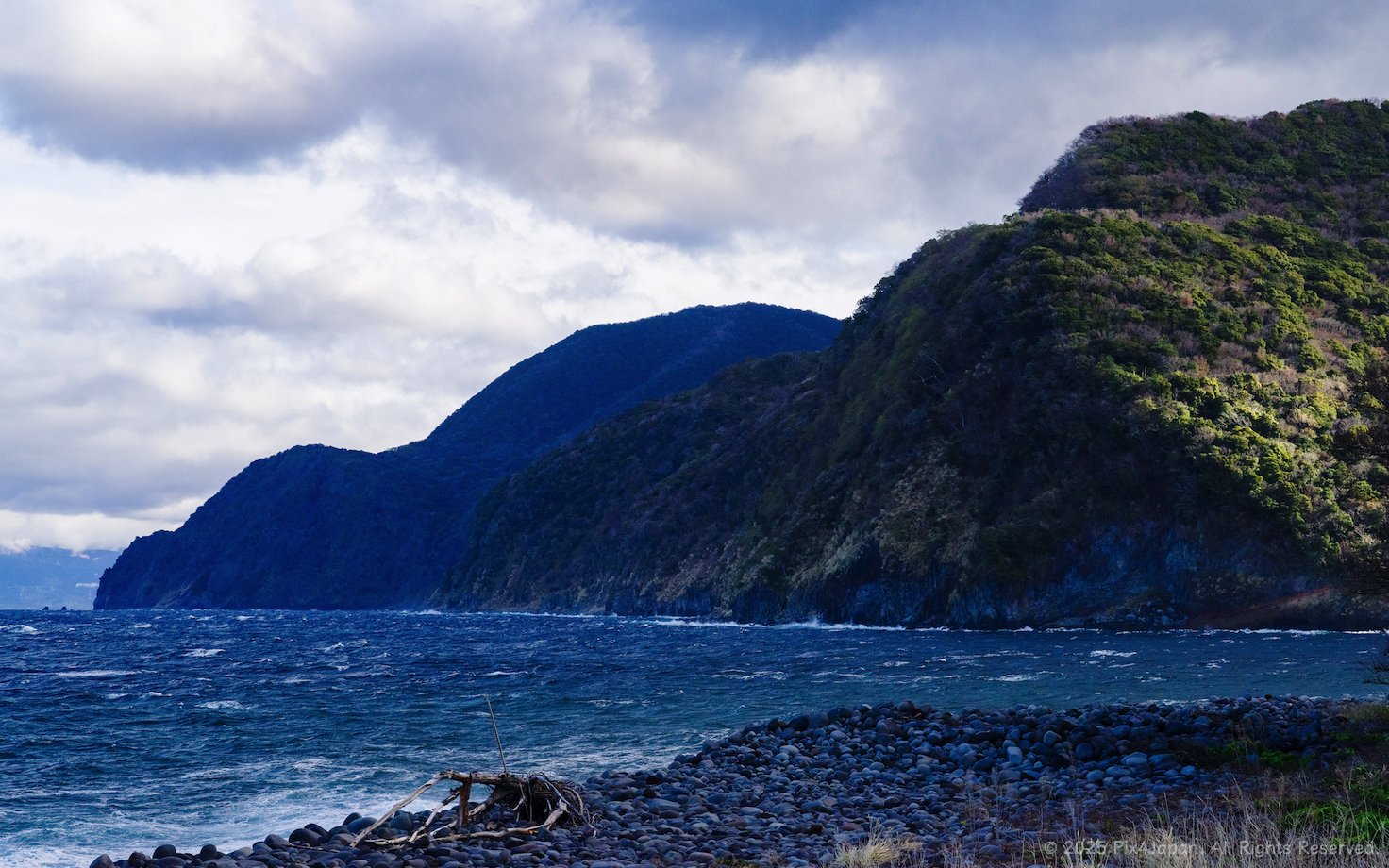
Cape Deai
For a brief moment, the sun pierced through storm clouds, casting light on a patch of woodland on the southern slope of Cape Deai. This dramatic headland rises above the formidable waters of Suruga Bay, along the rugged western shoreline of the Izu Peninsula, approximately 150 km southwest of Tokyo, Japan.

Suruga Bay
The rocky shoreline of Cape Mihama is inundated with smooth boulders, shaped by relentless waves that crash onto the western shores of the Izu Peninsula. Under cloudy skies, forested headlands extend into Suruga Bay, about 150 km southwest of Tokyo, Japan.

Moroguchi Shrine
An ancient Shinto shrine with a traditional dark clay-tiled roof stands deep within a tropical woodland of evergreen trees and ferns on Cape Mihama, along the western shore of the Izu Peninsula in Shizuoka Prefecture, Japan. Stone steps flanked by stone lanterns lead to the shrine’s worship hall bathed in the soft morning light of dawn, the scene is enriched by moss-covered surfaces and the serene ambiance of nature.